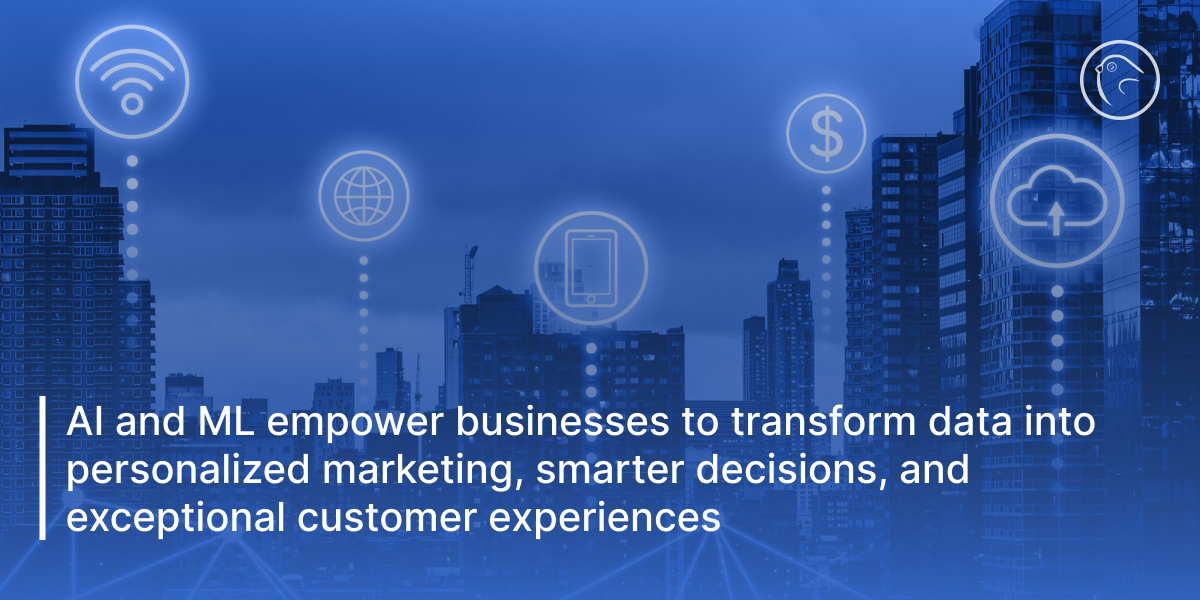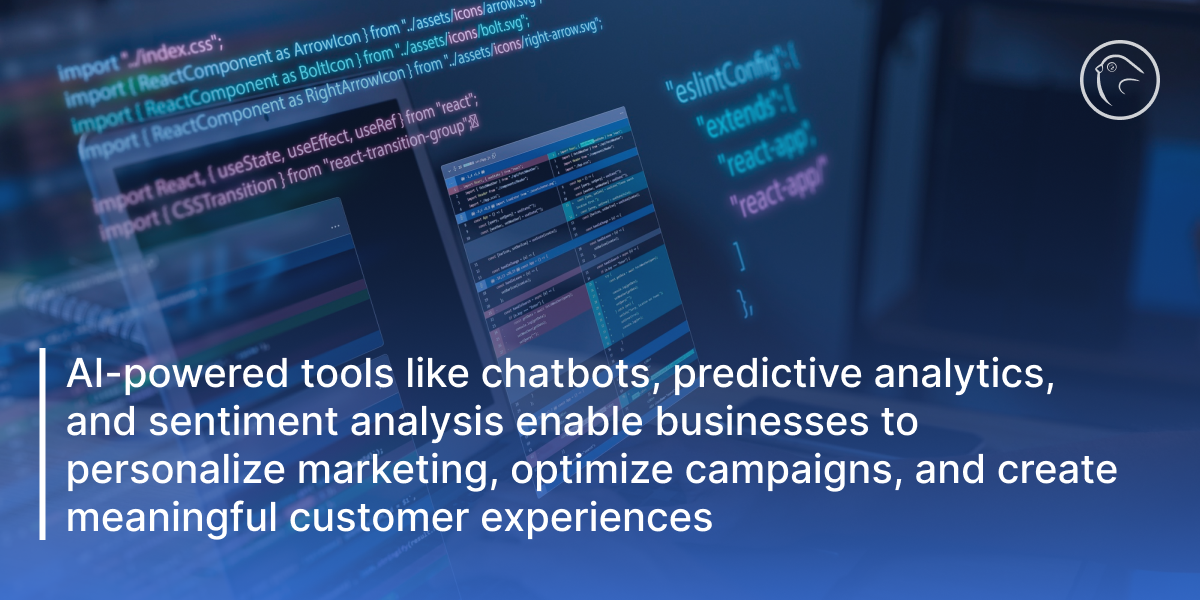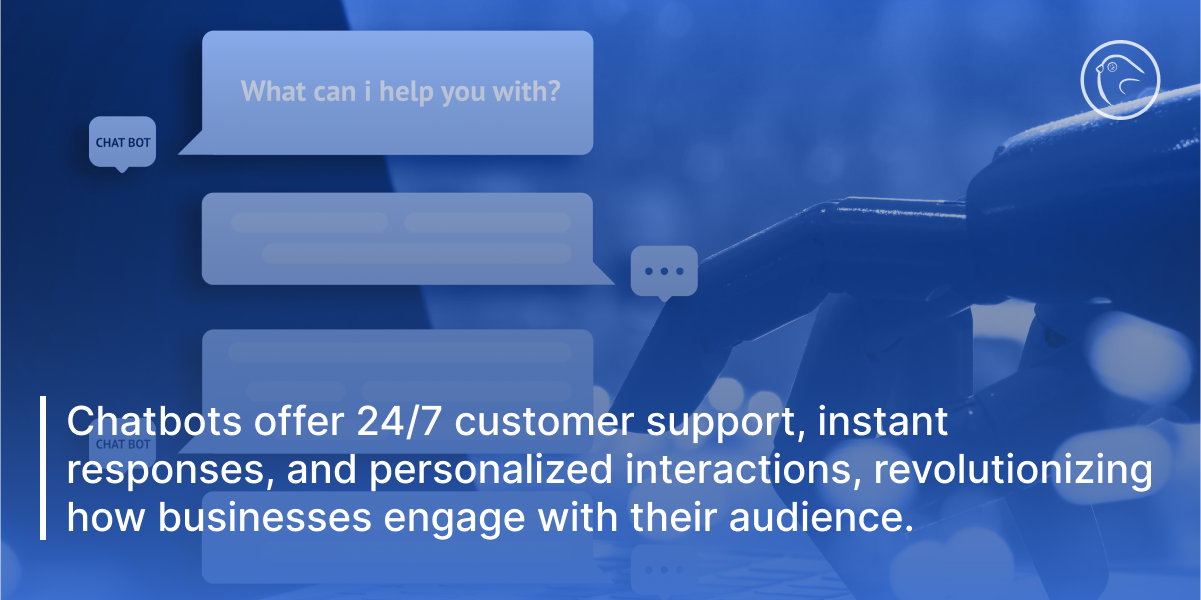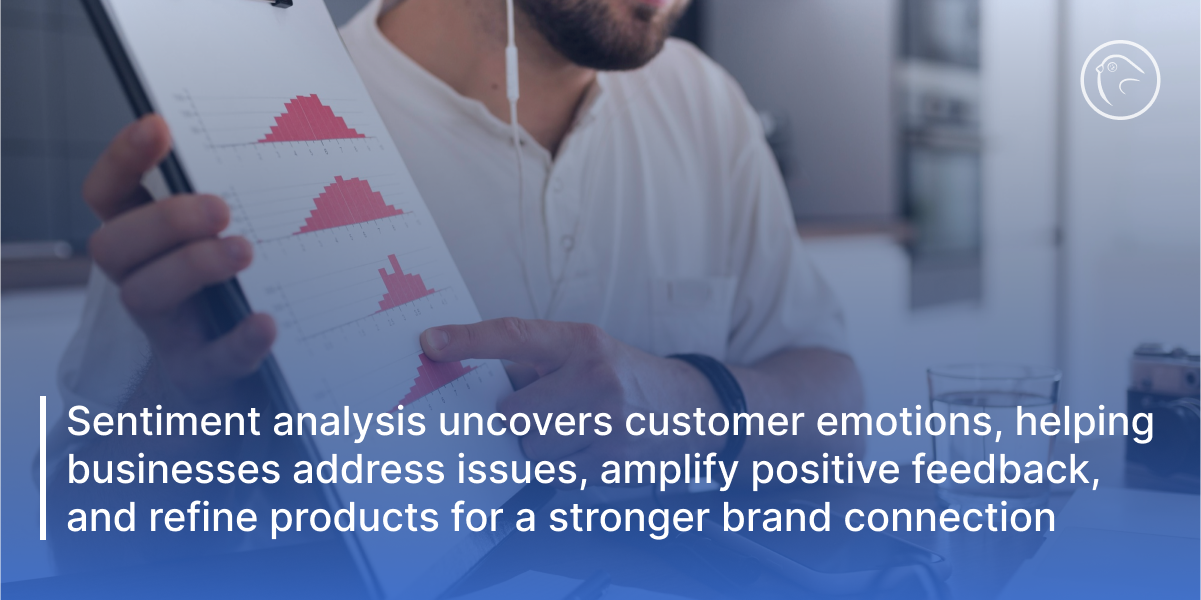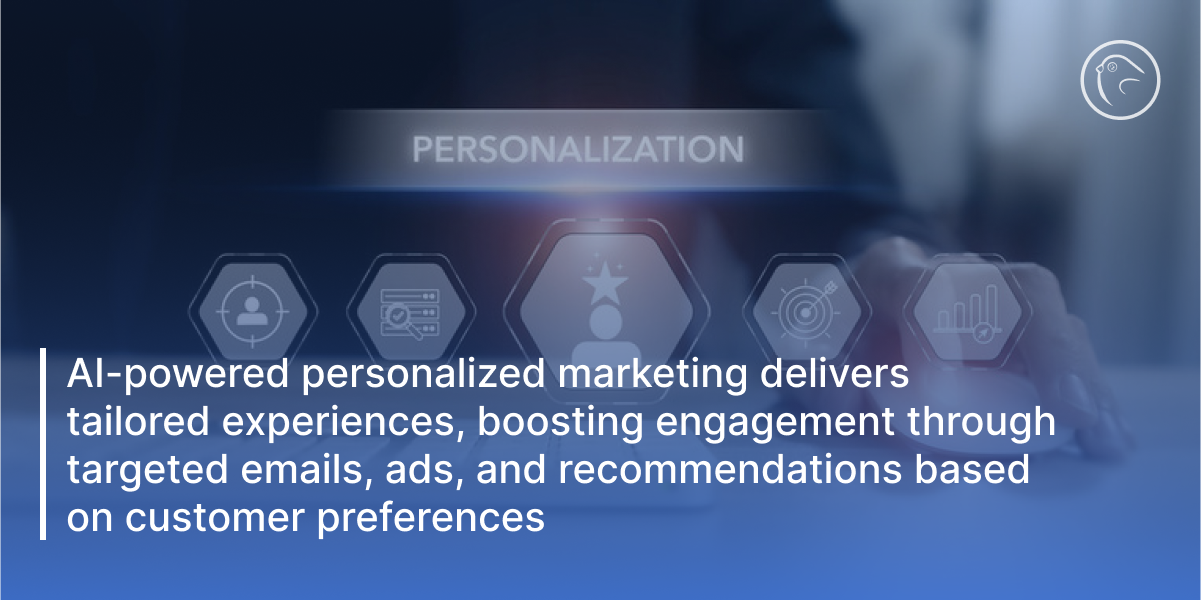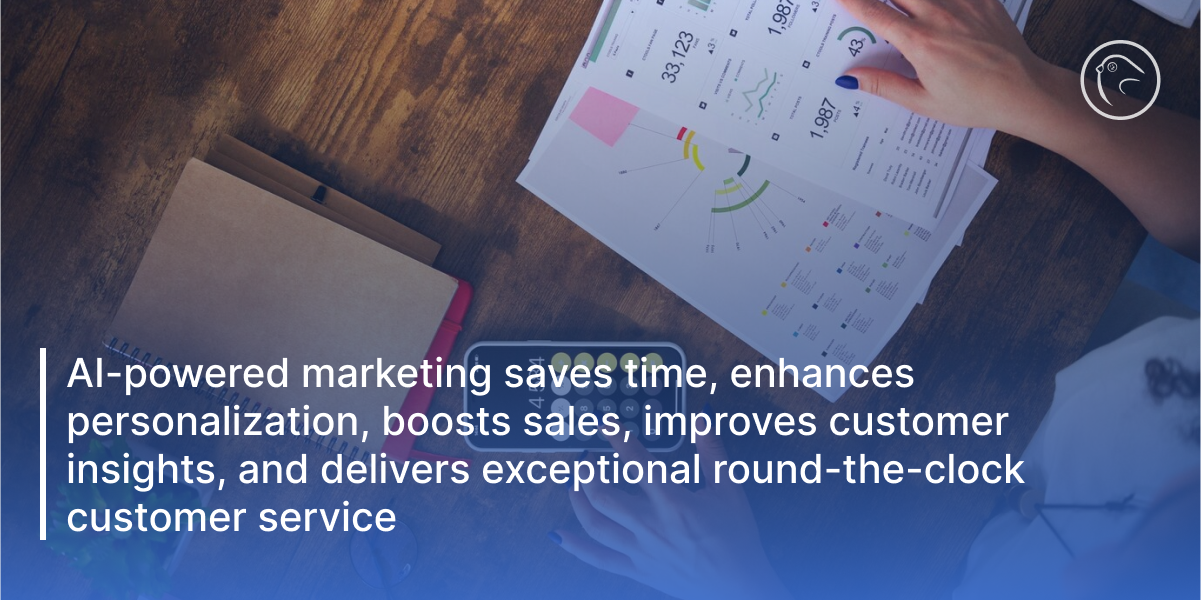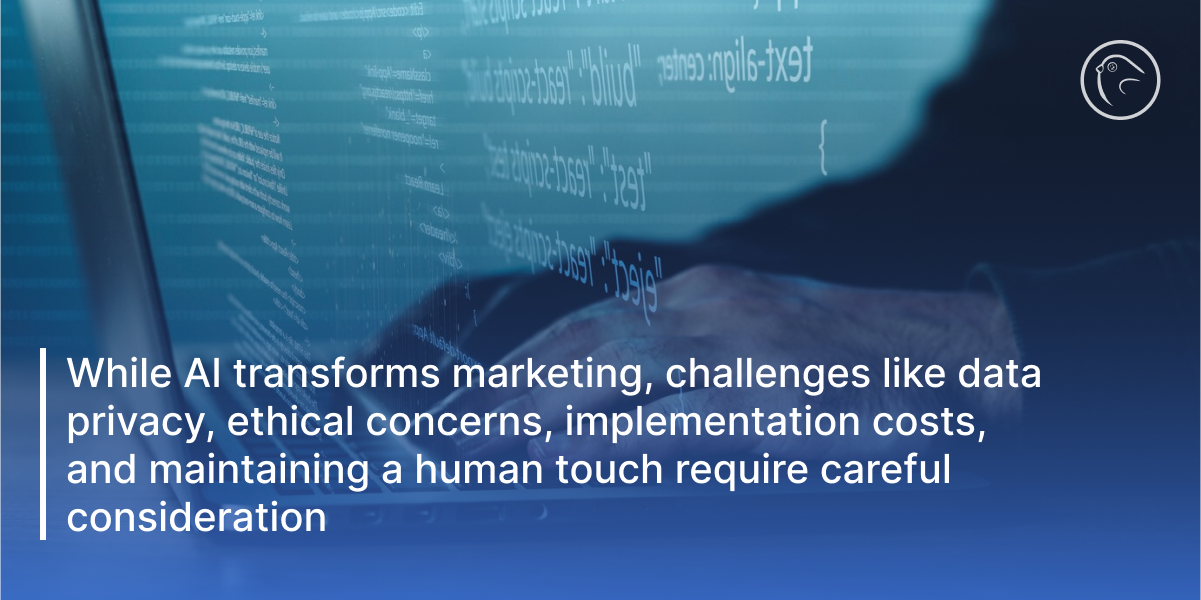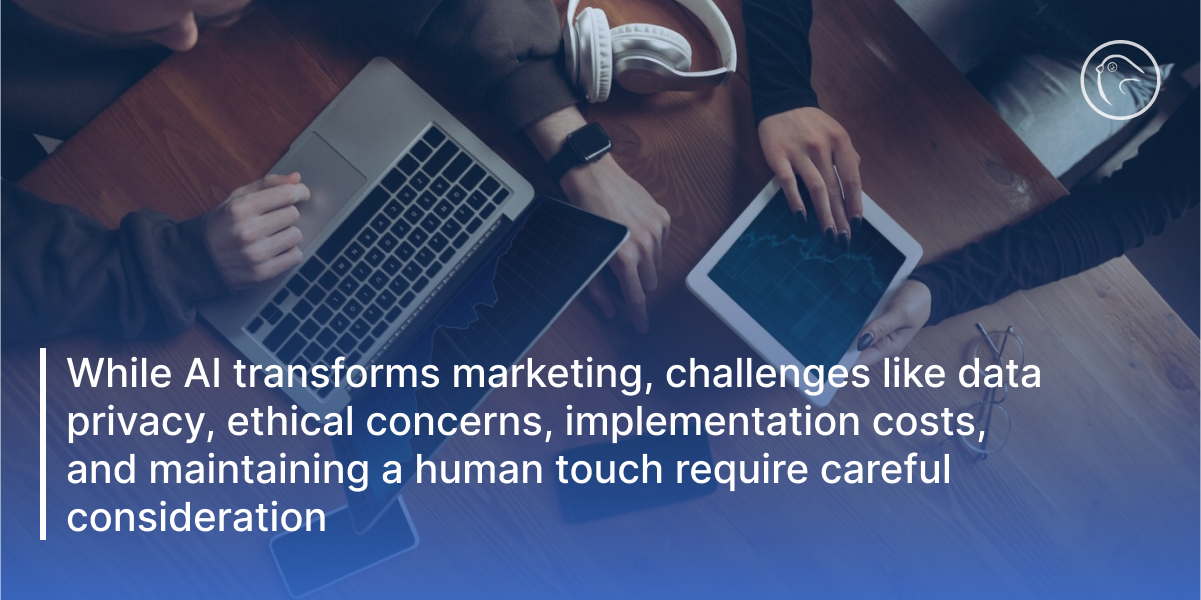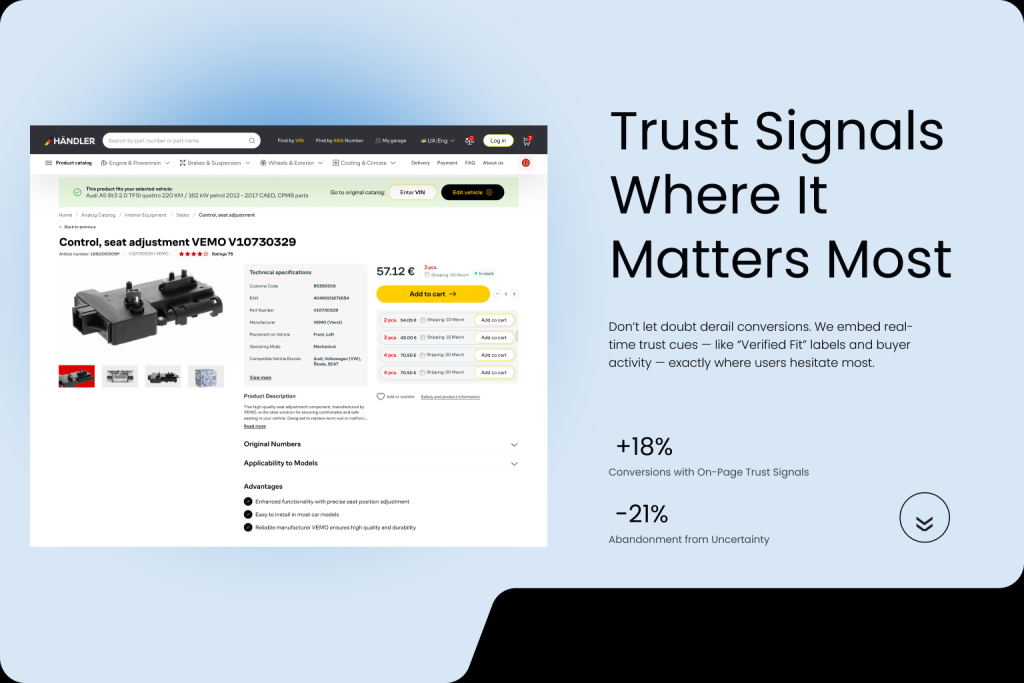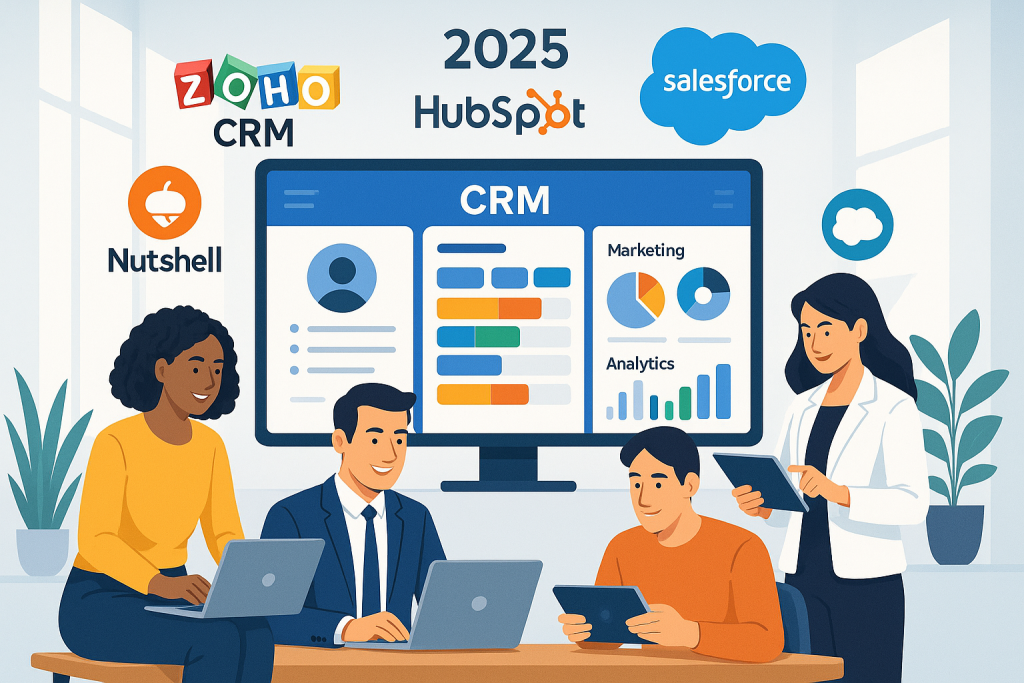Gone are the days when marketing was based on assumptions and generic campaigns. Today, artificial intelligence (AI) is rewriting marketing rules. This new technology allows businesses to connect with customers in smarter ways. What does it mean? First, it’s about a new level of personalization, where every interaction feels uniquely created for an individual user. Then, it’s the power of automation AI offers at every step.
75% of businesses are planning to increase their AI investments over the next two years. It’s no wonder – AI unlocks powerful insights and enables marketers to predict customer behavior with precision, understand emotions through sentiment analysis, and craft messages that work. How exactly does AI amplify marketing potential? Let’s explore this together!
AI and ML in Marketing – Core Concepts
Data is critical for businesses, and AI with ML empower companies to obtain and use the most relevant data and make better decisions. These tools track customer contact details, website activity, and buying preferences and allow businesses to improve products and marketing strategies.
Machine Learning (ML)
Machine Learning (ML) helps systems learn from data and improve over time. It does not follow fixed rules – ML looks for patterns in data to make decisions. This makes marketing more personalized and effective. 63% of companies already use ML to:
- Predict customer behavior. Learn whether customers will buy, leave, or like certain products.
- Segment customers. Group customers by age, interests, or past purchases for more targeted campaigns.
- Personalize recommendations. Suggest products based on the individual shopping behaviour of each customer.
Artificial Intelligence (AI)
AI is a broader concept that includes ML, natural language processing (NLP), and other technologies. AI automates tasks and analyzes massive data. In marketing, AI enables:
- Automated campaigns. Plan ahead email campaigns, social media posts, and other marketing activities.
- Sentiment analysis. Analyze customer feedback across all touchpoints (social media, reviews, surveys) to understand customer emotions and opinions towards the brand.
- Personalized experiences. Deliver personalized messages and offers and create a more exciting customer journey.
Key AI-Powered Marketing Tools and Strategies
Let’s study the practical point of AI in marketing with clear-cut examples. Here is how you can use AI to increase sales.
Chatbots – 24/7 Assistants
A chatbot is a virtual customer service assistant that never stops, responds instantly, and remembers every detail. These AI-powered tools use Natural Language Processing (NLP) to simulate human-like conversations with customers. They can answer FAQs, help with purchases, or resolve issues.
are chatbots so popular?
- 24/7 availability. Customers always want help here and now, and this is what chatbots are ready to provide.
- Enhanced customer service. Chatbots reduce wait times and provide accurate, often personalized responses.
- Lead generation. Chatbots can ask targeted questions to qualify leads and direct them to the sales team.
- Personalized offers. User behavior history allows chatbots to offer products or services that are interesting for a particular individual.
For example, Sephora’s Virtual Artist chatbot allows users to try on makeup right on the screen. Customers love this approach and buy more.
Practical tip. You can implement a chatbot on your website yourself, even without extensive coding knowledge. Platforms like ManyChat, Dialogflow, Chatfuel, and MobileMonkey are designed for ease of use. You only need to use drag-and-drop elements to build conversation flows, set up triggers, and define responses. Start with a simple chatbot and gradually expand its functionality as you gain experience.
Predictive Analytics – Plan Ahead
If only you had known yesterday what your customers want today, you could have prepared better, right? That’s what predictive analytics makes possible. It uses historical data to identify patterns and trends. Businesses can use this data to prepare for the coming demand and stay ahead of the competition.
You can read more about this in our previous article:
The Future of Personalization: Predictive Analytics and Machine Learning in E-commerce
Here’s how predictive analytics helps marketing specialists:
- Reduce customer churn. Every business has a percentage of customers who stop in the middle of their shipping journey. Now, you can spot them and offer more personalized recommendations.
- Build high-value customer segment. Identify and nurture the customers who are most likely to bring income.
- Sales forecasts. Once you know what will be in demand, you will be more prepared for the coming trends.
- Campaign optimization. Data helps refine your strategies and target the right audience at the right time.
Studies say that predictive analytics can improve marketing ROI by up to 25%. Popular tools are Salesforce Einstein, SAS Analytics, and Google Analytics 360.
Practical tip. Don’t apply predictive analytics everywhere; start with a single problem. For example, if a specific product has a high customer churn rate, use data to find out why. Look at factors like how often customers buy, their interactions with customer service, or how they use the product. Once you know the reasons, take action-offer exclusive discounts or personalized support to keep at-risk customers engaged.
Sentiment Analysis – It Matters What Customers Feel
Every comment, review, or response includes precious information about customer sentiment. Sentiment analysis uses AI to interpret these messages and uncover attitudes and opinions behind the words. This technology allows businesses to discover what customers feel about their brand or products. Why is it so important:
- The ability to address negative feedback. It’s a big mistake to ignore unhappy customers. Instead, knowing what they don’t like allows companies to quickly resolve issues that may affect their reputation.
- Cultivate positive feedback. Sentiment analysis will reveal what customers love and highlight strong points in a marketing strategy. Thus, it can be further strengthened.
- Improve product development. Marketers can use customer reviews to refine existing products or develop new ones that better meet their needs.
For instance, a brand that monitors social media reactions during a product launch can immediately understand public opinion and adjust its strategies. What tools can help? Brandwatch, MonkeyLearn, and Lexalytics are excellent for tracking and interpreting customer sentiment.
Practical tip. Don’t just look at overall customer sentiment-dig deeper into specific product features. Imagine you are selling clothing online. So, analyze reviews on fit, fabric quality, style, and price. This detailed feedback gives you clear instructions on where you are fine and where you need to improve.
Personalized Marketing – Every Customer Must Feel Special
Modern consumers want to get what they want, and AI makes personalization easier than ever. AI can analyze vast amounts of data and form patterns in behavior and preferences. Then, businesses can use these patterns to offer more relevant content.
You can read more about this in our previous article:
AI-Driven E-commerce Development: What to Expect in 2025 and Beyond
Ways to personalize marketing campaigns with AI:
- Email campaigns. AI creates personalized emails that resonate with recipients and increase open rates.
- Website content. You can use dynamic content to display different messages for different users. It may depend on the user’s location, browsing history, or preferences.
- Social media ads, AI optimizes ad targeting and delivers your message to the most relevant audience.
- Product recommendations. This approach is used by Amazon and Netflix which suggest items based on individual tastes.
HubSpot, Marketo, and Optimizely are powerful tools for customer personalization.
Practical tip. Experiment with a small segment of buyers, for example, first-time buyers. Use a simple tactic – a welcome email with product suggestions based on browsing history. Watch how it performs and use what you learn to improve personalization for other customer groups.
Benefits of AI-Powered Marketing for Businesses
You can achieve much more with AI-driven marketing and work less at the same time. The advantages are undeniable:
You will save time. The automation of many day-to-day tasks frees up a lot of time for everyone. Just imagine your emails are scheduled, data is arranged into clear reports and all ads are automatically posted on relevant platforms. Now, you can devote more attention to creative and strategic work. Such an approach can reduce marketing costs by up to 30%.
You can interact with your customers on a personal level. AI helps to individually approach every customer, even as businesses grow. Studies show that 80% of shoppers are more likely to purchase from brands that provide such a personal touch. In their turn, brands build deeper connections with their audience and increase loyalty and conversions.
You will grow your sales. AI will provide you with tons of accurate data. And this is not only information on your performance but also hints on future sales. These predictions allow you to get in touch with the right customers, accumulate the right stocks and maximize the outcomes. Predictive analytics can improve ROI by up to 25%.
You will better know your customers. It is easier to maintain a conversation with a friend than with a stranger. It is pretty much the same with sales. AI identifies customer preferences, pain points, and buying behaviors, and you learn what they will surely like. Such an understanding will simplify your marketing efforts as you know what and when to offer.
You will improve customer service. With chatbots, you are in touch with your customers round-the-clock. Fast and efficient customer service is one of the factors users evaluate and highly appreciate when making a purchase.
Challenges and Considerations of Using AI in Marketing
AI has multiple benefits, however, there are some downsides you must take into account.
Data privacy and security
AI intensively operates with customer data. So, you must strictly protect against leaks and breaches. Follow GDPR and CCPA regulations and obtain customers’ consent to handle their personal information.
Ethical considerations
AI can sometimes reflect biases. You must monitor that AI systems are fair and do not discriminate against any group. Even unintentional harm must be avoided at any cost.
Implementation costs
AI tools are expensive. You should evaluate in advance whether the investment is worth your planned outcome. Weigh all the pros and cons of the upfront costs before buying AI tools.
The human touch
You cannot fully rely on AI and lose that personal connection in customer interactions. Users should not feel they are only interacting with a machine. Think about a good balance between AI and human staff.
Bias in AI algorithms
AI algorithms can sometimes have biases that lead to unfair results. Whatever AI generates for you, always recheck the results. Test AI for potential issues to avoid problems in the future.
How Businesses Can Get Started with AI-Powered Marketing
Step 1. Check if you are ready for AI
Look at your current data and infrastructure. Do you have the right systems in place to manage and analyze data? AI works with solid, organized data, so your data must be well-structured and accessible.
Step 2. Prepare your data
Next, bring all data – sales, customer interactions, and third-party vendors – into one centralized system. AI should access and process it easily. You may need to hire experts to get everything in order and ready for use.
Step 3. Choose the right tools
Find AI tools and platforms that are a good fit for your business. Look for ones that are easy to use and can grow with your needs. Choose solutions that integrate well with your existing systems and are technically understandable for your people.
Step 4. Build a strong marketing team
To make the most of AI, you’ll need a team that understands how to use it. You may need to train your existing staff or hire a dedicated team.
Step 5. Picture your customer journey
Take a fresh look at your customer journey and think about how AI can make it even better. Model clear use cases to test these ideas and see how well they work for your audience.
Step 6. Measure and improve
After the launch, always track the performance. Monitor user engagement, conversion rates, and customer satisfaction. Use these metrics to refine your strategies, make adjustments, and improve over time.
AI marketing is not a trend – it is a new opportunity for success. AI can help businesses predict trends, personalize experiences, improve operations, understand customers better, and boost sales, leading to greater success.
However, many businesses only tap into the basics of AI, missing out on its full potential. To really make the most of AI, you may need professional advice. Contact Kozak Group -we will help you explore its advanced capabilities and drive your business!



